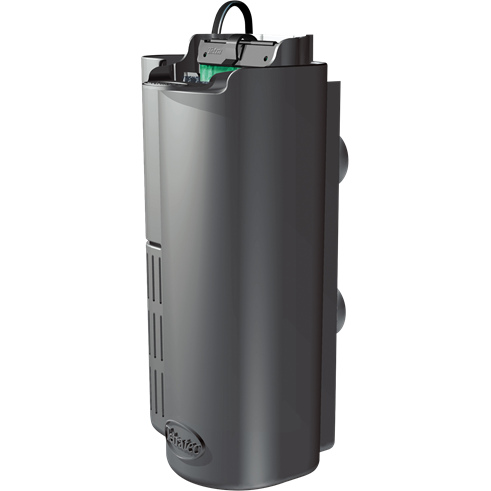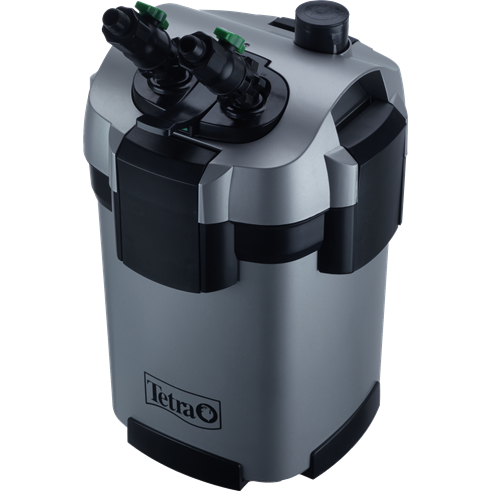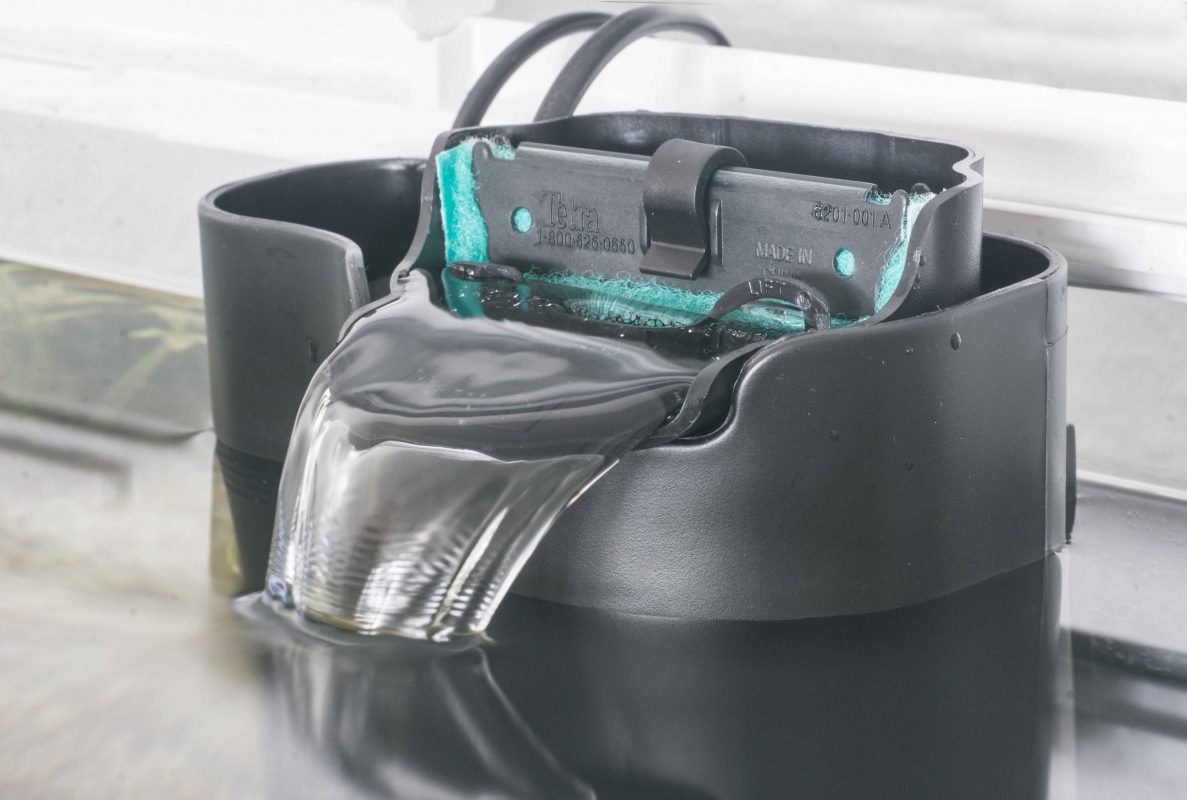Every aquarist knows what an aquarium filter is. Without one, life in your underwater world simply wouldn’t be possible. But why is this aquatic device so important and why does every aquarium need a good filter? There are so many different types of filtration and filter that it’s easy to lose track of things. Read on to find out everything you need to know about the different aquarium filters.
What are aquarium filters for?
Without filters, fishkeeping would be impossible and the fascinating underwater world in your aquarium would be unable to survive. Aquarium filters help to keep your aquarium clean so that you can enjoy it without having to make a great deal of effort. With the right filter, you can be sure that the biology, and thus the water chemistry, are in order in your tank. It removes unwanted substances from the aquarium and keeps the water clear.
But what exactly does an aquarium filter consist of? One of the main elements is the filter pump, which draws up water mostly from the bottom of the tank and transports it into the filter. The actual filter process takes place within the filter via the filter substrates and/or filter materials. These filter substrates can be made up of filter floss, foam mats, ceramic rings, etc.
Natural bodies of water are able to clean themselves because organic contaminants or pollutants, inter alia, are broken down by a variety of organisms, thereby enabling the natural system to survive and encouraging biological diversity. These microorganisms can be found everywhere in the water body, whether at the bottom, on stones or on plants. They make life possible in the water in the first place. Such microorganisms called “filter bacteria” also settle in your aquarium and make sure that biological filtration takes place throughout the tank. However, your aquarium’s ability to clean itself is not sufficient to remove all harmful waste materials from the water. You therefore need a filter, as the self-cleaning processes are particularly effective within aquarium filters. Such devices therefore ensure an optimum biological balance in aquariums.
What are the different types of filter?
Internal filter
An internal filter is a relatively small filter that you can place directly in your aquarium. This makes it particularly suitable for smaller aquariums with a smaller fish stock, but it can also be used in larger ones. The filter draws up aquarium water, channels it through a filter medium and returns the clean water into the tank via an air outlet. This creates constant movement at the water surface and, at the same time, ensures that a sufficient supply of oxygen is always released into the water.
The most common filter material is a foam cartridge. Internal filters are usually very quick to clean, but in some circumstances they require cleaning more frequently.


External filter
External filters are generally used for aquariums with a volume of around 120 litres of more. As the name implies, they are installed outside the aquarium, often in base cabinets. As external filters are considerably larger than internal ones, a wide range of substrates can be used, each performing different filter functions from coarse to very fine. On the pump located inside the external filter there are two hoses that lead into the aquarium. One of the hoses draws up water mainly from the bottom of the tank into the external filter and the other returns the cleaned water at the surface.
The advantage of external filters is that they offer high performance and can accommodate several different filter substrates. These include coarse or fine foams for filtering out suspended particles or large-surface substrates on which numerous filter bacteria can settle. External filters can also be filled with special substrates that can directly influence the water chemistry, e.g. the pH value.
Different types of filtration
Mechanical filtration
A mechanical filter can be compared with a kind of sieve or coffee filter that traps certain particles. It is used in all aquariums to remove suspended particles from the water. As described above for internal and external filters, the water is drawn up by a pump and flows through a filter substrate, such as a foam mat, which filters out any contaminating particles. As the particles vary in size, the filter media range from coarse to fine, thus allowing different degrees of filtration. However, mechanical filters cannot filter any substances that are dissolved in the water. For this reason, such filters are often used as “pre-filters” before biological or “chemical” filtration.
If a mechanical filter is used as a separate pre-filter, we recommend cleaning it more frequently, if required. You can tell when your aquarium filter needs cleaning by the outflow of your device. If the flow rate of your filter has clearly fallen due to the quantity of trapped particles you should clean the filter substrate properly. However, if you have the right filter for your aquarium, you should only need to clean it a few times a year.
Over time, bacteria will gradually settle on the filter substrate, so sooner or later your mechanical filter will naturally end up functioning like a biological filter.
Biological filtration
All aquariums also need biological filtration. The respective filter materials offer an ideal environment for filter bacteria, known as “nitrifiers”. They settle on the filter substrate and break down waste materials dissolved in the water, which serve as nutrients for them. One of the most notable waste substances is ammonia (NH3), which is created by fish protein metabolism. Ammonia is also produced during the decomposition of food remains and dead plant materials, for example. This substance is toxic to fish and other aquatic creatures and can be life-threatening or even deadly in high concentrations. For this reason we need filter bacteria to convert this toxic ammonia.
During the first stage, certain types of filter bacteria (e.g. of the Nitrosomonas genus) break down ammonia into nitrite (NO2), but this substance is still poisonous to fish. During the next stage, other filter bacteria (e.g. of the Nitrospira genus) turn toxic nitrite into harmless nitrate (NO3). This substance is generally well tolerated by fish, but in high concentrations it can also become a water pollutant.
Once the biological filter has become well established, you should clean your filter very carefully to prevent the filter bacteria from being removed, damaged or even killed off. When you replace the filter medium, you should always use some of the old filter medium together with the new one to start with so that the biologically active “old” filter material can inoculate the new material with filter bacteria. The Tetra products SafeStart and FilterActive can help with this.
“Chemical” filtration
A further filtering process is known as “chemical” filtration, although it cannot really be called “chemical” in the strict sense of the word. “Chemical” filtration refers to the use of activated carbon, for example, but no chemical reaction actually takes place; instead certain dissolved substances (such as harmful matter or medication constituents) are adsorbed. External and internal filters can be supplemented with cartridges or loose activated carbon to perform this filtration step.
However, it’s worth noting that you shouldn’t leave activated carbon in your aquarium filter on a permanent basis as it loses its filtering capacity after a while. In fact, filtered toxic substances may even end up back in the aquarium water as a result, which could harm your fish. What’s more, if you always use activated carbon as a filter without a specific purpose, you may end up filtering out beneficial substances as well as harmful ones.
When you buy an aquarium filter, you should make sure that it is suitable for your aquarium in terms of efficiency and size as well as your fish stock. This is the only way to create the required optimum biological balance in your aquarium and ensure that all of your aquatic creatures survive.

